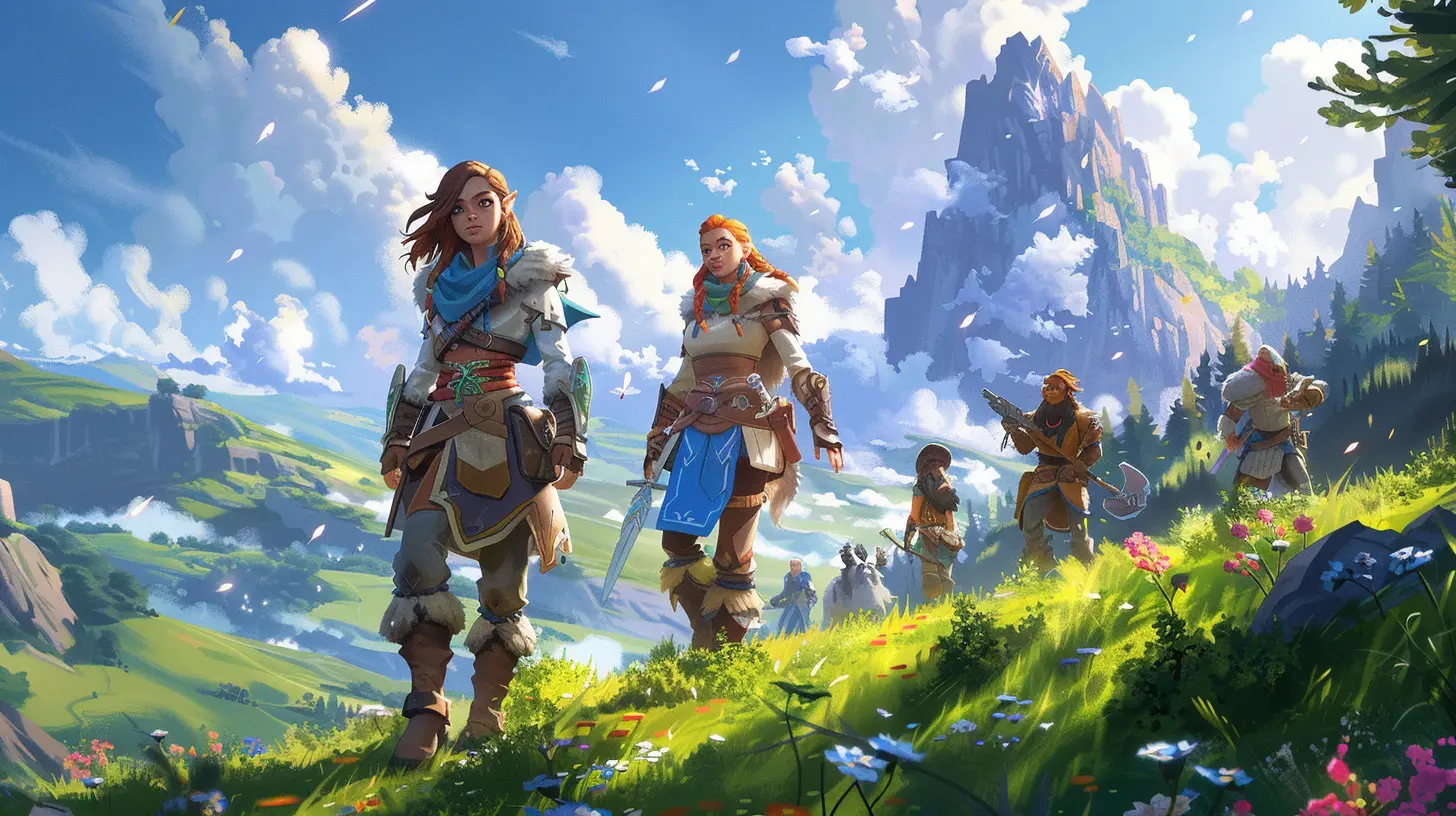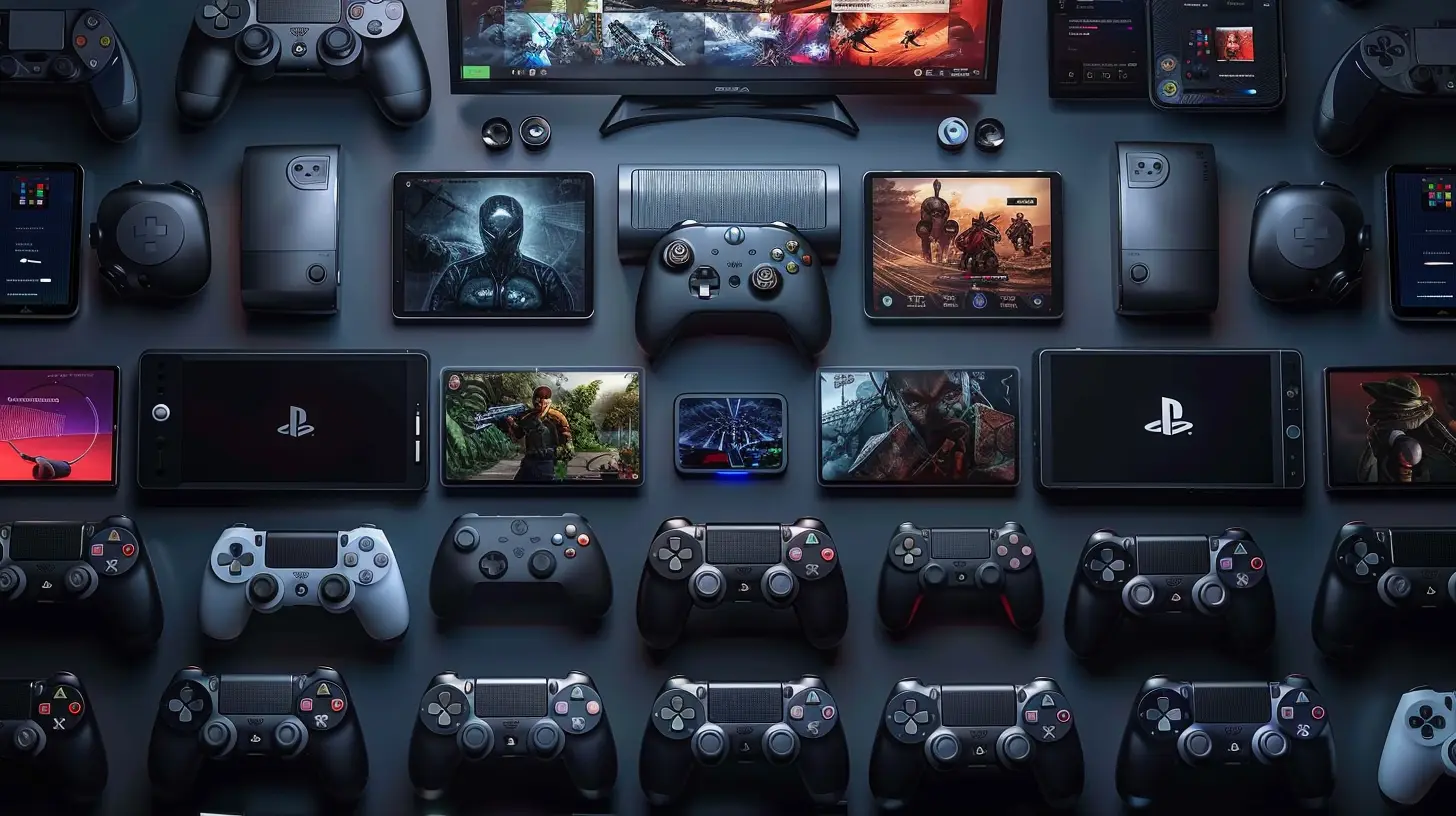Why Cross-Platform Compatibility is the Future of Gaming
8 July 2025
Let’s face it—gaming has come a long way since the days of blowing on Nintendo cartridges like we were trying to resuscitate a dying hamster. Now, gaming isn’t just an activity; it’s an entire lifestyle. From epic console duels to PC master race arguments, we gamers love our debates. But you know what we also love? Playing together, regardless of the device we’re using.
Enter cross-platform compatibility—the gaming buzzword that has everyone’s attention. Let’s dive into why this glorious feature is not just a luxury anymore but the undeniable future of gaming. Grab your Mountain Dew, settle your Dorito hands, and let's break this down! 
What the Heck is Cross-Platform Compatibility?
Alright, let’s not overcomplicate things. Simply put, cross-platform compatibility means players on different platforms—be it PC, PlayStation, Xbox, Nintendo Switch, or even mobile—can join the same game and play together. It’s like pulling down the invisible wall that separates your console-loving bestie from your PC-warrior self.Remember those playground rules where everyone got to play kickball, regardless of their sneakers? Yep, it's kinda like that. Except here, instead of a ball, we’re shooting lasers, building forts, or slashing goblins. 
Why Cross-Platform Gaming Feels Like a Cheat Code for Fun
Cross-platform compatibility isn’t just a gimmick; it’s a game-changer (pun intended). Let’s talk about why it’s the future:1. No More Friend Group Drama
You know the situation: Your squad decides to play a new game, and you discover the one friend who has “loyalty” to a certain console and refuses to switch. What are you supposed to do? Cut them out of your life over a PlayStation/Xbox war?Cross-platform gaming means no one gets left behind. Whether Mike is on his $3,000 water-cooled gaming rig, Jenny is clutching her Switch like it's her firstborn, and you’re sitting on the couch with your Xbox controller, you can still team up and wreak havoc. It’s like gaming’s version of world peace.
2. Bigger Player Pools (Which Means Less Waiting Around)
Ever tried queueing up for a match only to feel like you're stuck waiting in line at the DMV? Nobody has time for that. Cross-platform compatibility merges player bases from different platforms, which means you’ve got way more people to compete with—or carry you, let’s be real. The result? Faster matchmaking and fuller lobbies.It’s like turning your small backyard BBQ into a citywide block party. Everyone’s invited, and there’s always entertainment on tap.
3. Economic Efficiency for Developers (AKA, They Can Spend More On Cool Stuff)
Developers are people too, you know. (Well, some might be AI, but who’s counting?) Making separate versions of a game for every platform is like cooking five different dinners for a family of four. It’s exhausting and expensive.When game companies focus on cross-platform compatibility, they streamline the whole process. That means more of their resources go into adding cool features, better graphics, or fixing that glitch where your character gets stuck dancing in T-pose.
4. Recycling Your Gaming Gear
Let’s be honest: Gaming hardware isn’t cheap. You’ve probably sold a kidney—or at least thought about it—to get your current setup. Why should you have to keep upgrading or switching consoles just to play with your friends?Cross-platform compatibility lets you keep using the equipment you’re comfortable with while still enjoying the latest titles. So whether you’re clutching your trusty Xbox One controller or smashing keys on your ancient mechanical keyboard, you’re still in the game. Literally.
5. Leveling the Playing Field
Now, I hear you skeptics: “But PC players have an advantage with their insane graphics and precision aiming!” Yeah, that’s true. But cross-play is also pushing developers to create balanced gameplay environments. Auto-aim for controllers? Check. Skill-based matchmaking? You got it.It’s like pitting an Olympic sprinter against a person on roller skates and then making sure they start from the same line. Is it perfect? Nah. But it’s a step toward inclusivity, and that’s worth celebrating. 
The Hurdles (Because, Let’s Be Real, It’s Not All Sunshine and Rainbows)
Alright, before you start popping champagne, let’s discuss the not-so-fun stuff. Cross-platform gaming isn’t without its hiccups.1. Technical Nightmares
Connecting different systems is like trying to get cats and dogs to attend a yoga class. Each platform has its unique ecosystem, which can make integration a developer’s worst nightmare. Bugs, syncing issues, and performance disparities are common headaches.2. The Age-Old Keyboard vs. Controller Debate
Ah, the eternal struggle. Keyboard warriors argue that controllers are clunky and inaccurate. Console players claim PC users are basically cheating with their faster reflexes and headshot precision. The debate is older than Gandalf’s beard, but hey, competition keeps things spicy, right?3. Platform-Specific Policies (Looking at You, Sony)
Let’s not ignore the elephant in the room: corporate politics. Some companies (cough Sony cough) have been hesitant to fully embrace cross-platform play. Why? Because keeping players locked into an ecosystem benefits their bottom line. But even they’re slowly coming around, probably after realizing fans aren’t afraid to meme them into oblivion.
Why Cross-Platform Compatibility is Basically Inevitable
The gaming industry is like that kid in gym class who peaks after realizing everyone expects them to fail. It constantly evolves to meet (and exceed) expectations. Cross-platform compatibility? It’s not a “maybe”; it’s a “when.”Here’s why:
- Gamer Demand: Gamers are vocal. (Like, really vocal.) If we want something, you can bet that developers are listening. Cross-play isn’t just a feature anymore; it’s a selling point.
- Tech Advancements: The technology to connect platforms is getting better every day. Cloud gaming, better servers, and AI integration are making cross-play seamless.
- Community Spirit: Gaming is all about connection—whether it’s teabagging your buddy in Halo or strategizing with strangers in Fortnite. Being able to play together, regardless of hardware, just makes sense.
The Road Ahead
Picture this: It’s 2030. You’re sitting in your hover chair with a VR headset strapped to your face, yelling at your friend across the globe who’s playing the same game on their smartwatch. That’s the future we’re heading toward, folks!Okay, maybe not the smartwatch part. But seriously, cross-platform compatibility is the next big thing. And it’s not just for us gamers—it’s a win for developers, publishers, and the overall health of the industry.
Final Thoughts
Cross-platform compatibility isn’t just about gaming with friends on different systems; it’s a movement toward inclusivity, efficiency, and crazy-fun community dynamics. Sure, there are obstacles (looking at you, compatibility bugs), but the rewards far outweigh the challenges.So the next time someone asks you why cross-play matters, you can tell them it’s not just the future of gaming—it’s the future of fun. Now, if you’ll excuse me, I need to go settle the score with my PlayStation friends in Rocket League.
all images in this post were generated using AI tools
Category:
Cross Platform GamesAuthor:

Lana Johnson
Discussion
rate this article
1 comments
Uma Bailey
Oh, absolutely! Because who wouldn’t want to watch their friends effortlessly play together while you’re stuck on your outdated console, clutching your controller like a lifeline? Cross-platform compatibility is clearly just a ploy for world peace and unicorns, right? Sign me up!
July 14, 2025 at 4:32 AM

Lana Johnson
I get your frustration! Cross-platform compatibility aims to unite gamers, making it easier to enjoy multiplayer experiences together, regardless of their console choice. Let's embrace the future!


